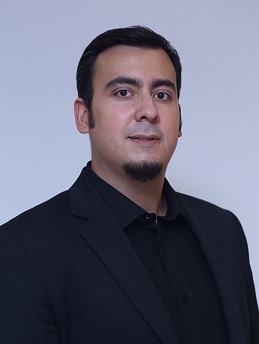
Making Friction Vanish via Structural Superlubricity
Mehmet Z. Baykara, Professor
Department of Mechanical Engineering, University of California, Merced
Friction is one of the most common yet intriguing physical phenomena encountered in our daily lives. It would be impossible to play a stringed instrument or write with a pencil without the presence of friction and related effects. On the other hand, friction has a detrimental impact on global demand for energy and consequently, environment and economy: About one fifth of the annual energy consumption on earth is used to overcome friction in a variety of systems and processes, from automobiles to manufacturing operations. As such, methods devised to mitigate and control friction can have important implications for conservation of useful energy, increased lifetime of mechanical devices, and decreased environmental impact.
The idea of structural superlubricity holds immense potential for the realization of nearly frictionless sliding in mechanical systems, with implications for fields as diverse as environmental conservation and space travel [1]. The basic principle of structural superlubricity involves the proposition that friction should diminish at an interface formed by atomically-flat and molecularly-clean crystalline surfaces with different lattice parameters and/or incommensurate orientation. Despite the rather straightforward character of its basic principle, the realization of structural superlubricity under ambient conditions has been challenging due to the requirement of molecular cleanliness at the interface.
In this talk, we will present results of atomic force microscopy (AFM) experiments from our lab, which demonstrate the remarkable occurrence of structural superlubricity for gold and platinum nano-islands sliding on graphite under ambient conditions [2, 3]. Complementary to the experiments, results of ab initio calculations will be discussed, which reveal that the noble metal–graphite interface is expected to remain largely free from contaminant molecules, leading to superlubric sliding under ambient conditions. The talk will conclude with a review of remaining challenges for structural superlubricity, in particular those involving size- and deformation-related limits.
[1] M.Z. Baykara, M.R. Vazirisereshk, A. Martini, Applied Physics Reviews 5, 041102 (2018).
[2] E. Cihan, S. Ipek, E. Durgun, M.Z. Baykara, Nature Communications 7, 12055 (2016).
[3] A. Özoğul, S. Ipek, E. Durgun, M.Z. Baykara, Applied Physics Letters 111, 211602 (2017).
About the Speaker
Dr. Baykara obtained his B.S. degree in Mechanical Engineering from Boğaziçi University in Istanbul, Turkey in 2006, and his Ph.D. degree from the Department of Mechanical Engineering & Materials Science at Yale University in 2012. His doctoral thesis was recognized by the “Henry Prentiss Becton Graduate Award for Exceptional Achievement in Research” at Yale University. Between 2012 and 2017, Dr. Baykara worked as an Assistant Professor at Bilkent University, where he has conducted research funded by the European Commission. During that time, he held visiting scholar positions at Columbia University and Harvard University. At the beginning of 2018, Dr. Baykara moved to the Department of Mechanical Engineering at the University of California, Merced, to start a new faculty position.
Dr. Baykara authored publications in journals including Nature Communications and Nature Nanotechnology, and has delivered numerous invited presentations at research institutes and universities around the world. He is the recipient of multiple academic awards, including those from the American Vacuum Society (AVS), Materials Research Society (MRS) and the German Physical Society (DPG).
Date/Time:
Date(s) - Apr 12, 2019
10:30 am - 12:00 pm
Location:
2101 Engineering V
420 Westwood Plaza Los Angeles CA 90095
